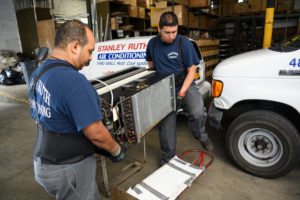
You've likely wondered how to get certified as a small engine mechanic. It is important to find out what your state requirements are. Every state will have its own testing, educational, and practical requirements. Contact your state's regulatory agency or professional licensing board for more information. If you have any questions, the Penn Foster Program provides contact information and information for state licensing bodies as well information regarding industry licensing.
EETC certificate
The EETC Technician Training Certification Program gives students a high technical proficiency level and enhances professionalism at dealerships. The industry standards are used to create the tests. They were written by a committee composed of distributors, manufacturers and dealers. This certification shows that students have a solid understanding of small engine maintenance and repair and a deep appreciation for the industry. Students also get hands-on experience with lawn and garden equipment. This is especially valuable for retail workers.

College programs
You will need to complete specialized training to be a small engine mechanic. This course will equip you with the knowledge and skills to repair all types of engines, both diesel and gas. This course focuses on basic troubleshooting skills and repairs and includes both lab and hands-on experience. Students will learn to read, use, and replace electrical components. This course also covers various parts of the engine such as the starter and alternator as well the distributor.
Apprenticeships
For small engine repairs and maintenance, you will need small engine mechanics. Many small engines require tuning and maintenance. You'll work with lawn mowers as well snow blowers and weed cutters. You will learn about drive systems such as belts, pulleys or chains and how they work. Electric systems will be covered as well, including starting, charging and safety systems. You'll also learn how to troubleshoot electrical problems and how you can replace parts.
Online programs
Online courses for small engine mechanic certification offer many benefits. The best part about online courses is that you can obtain your certification from a trusted institution. Your skills are well represented by certifications from the Equipment & Engine Training Council. They are the largest manufacturer for small engine parts and accessories. They give employers an accurate representation about your skill level, and make sure you are ready to work in high-demand occupations.

Amra certification
A small engine mechanic is responsible to tune and repair various small engines' mechanical components. These engines can include lawn mowers and snow blowers as well as weed cutters. You need to be able to identify and repair the problem in small engines. You will also need to be able to inspect and troubleshoot small engines. It is also important to be able to use tools and other equipment. Understanding the workings and limitations of electrical systems is essential for small engines.
FAQ
Is it difficult to find a job as a mechanic in the automotive industry?
Yes, it's possible. Garages often advertise their jobs online and people just apply because it seems fun. If you want to get your foot in the door, you should try applying for a few places and see if they accept student applications. Ask your friends and family to recommend anyone in the field. They might be happy to recommend someone.
What are the qualifications for an automotive technician
You must have graduated high school or GED, with excellent English and math grades. It is also necessary to be able both to read and to write. To be allowed to work, you must pass a written and practical test.
Does it really matter what college I choose?
Not really. In terms of getting into the auto industry, there is no distinction between colleges. But, there are better programs at some schools than others. Look elsewhere if you want something more niche.
Statistics
- The U.S. Bureau of Labor Statistics (BLS) reports that the job outlook for automotive service technicians and mechanics is expected to decline by 4% from 2019 to 2029. (indeed.com)
- 52% of Mechanics in the United States think their salaries are enough for the cost of living in their area. (indeed.com)
- There were 749,900 jobs available for automotive service technicians and mechanics in 2016, which is expected to grow by six percent through 2026. (jobhero.com)
External Links
How To
How to diagnose your vehicle properly for repair
The symptoms of your vehicle are the first thing you need to look at in order to determine whether it is in dire need of repairs. Follow these steps to properly diagnose your vehicle.
-
Check engine lights. You should inspect the dashboard lights, such as the engine light indicator and the oil pressure gauge. Also, check the battery light indicator. You may have a problem with your vehicle if any of the indicators are flashing for more than a few days.
-
Check the treads of your tires. Tires that are worn can cause issues with handling and braking. You should also inspect the wheel treads. You should ensure that they are clean and smooth. The best way to do this is to remove the wheels and take them off. You can check the tread wear with a flashlight.
-
Pay attention to the level of your brake fluid. You must keep track on the level of brake fluid in your vehicle. This will ensure that your brakes run smoothly. Your brakes may fail if the brake fluid level drops.
-
Test the suspension system. Vehicles usually have a suspension system that helps absorb shocks and vibrations while driving. This suspension system provides greater control and smoother acceleration and deceleration. If your vehicle has a suspension problem, it might feel wobbly or shake uncontrollably. To determine whether your vehicle may have a suspension issue, you can try to put weight on the rear or front axle and watch the movement.
-
Examine your steering column. The steering column connects the steering wheel to all other components of the vehicle. Steering columns can be damaged by accidents. You should replace your steering column if it feels loose or unstable.
-
Observe the exhaust pipe. The exhaust pipes are responsible for moving gases from the combustion chamber into the atmosphere. You can let harmful fumes into your home if your exhaust pipes crack or leak. You should also fix any bent tailpipes immediately.
-
Look under your hood. If you see anything unusual, take a look under the hood. Your engine could be leaking fluids. If you smell something strange coming from your engine compartment you should call a professional technician.
-
Make sure to check the air filter. The outside environment can collect dust and other debris in your vehicle's air filters. Dirty air filters can cause your vehicle to run poorly. Replace your air filter regularly.
-
Verify the fan belt. Your vehicle's fanbel connects the engine and transmission. If it breaks, the engine won't turn over. The process of replacing the belt is straightforward. You only need a screwdriver or pliers to replace your belt.
-
You should inspect the radiator and hoses. The radiator hose is used to carry water from the radiator to your engine. It can become cracked or damaged and leak hot liquid onto your engine. The hose can be repaired with a pair or needle-nosepliers, and a wire brush.
-
Check the windshield wipers. Windshield wipers use electricity to wipe away rain and snow. If they stop working they could leave streaks behind on your window glass. Simply change the washer oil to fix the problem.
-
Make sure you check the cables. The battery cables provide power for the electrical systems in your car. If you are replacing batteries, disconnect the negative cord first. Failure to do so can damage your alternator.
-
Make sure your headlights are working properly. Headlights are used to illuminate the road ahead. If they don't work properly, it can cause poor visibility. Inspect the bulbs for signs of burnt out.
-
Make sure you have your lights on. If you approach other drivers at night, lights will warn them. If one doesn't work, it could distract you and lead to an accident.
-
Check the brakes. Brakes slow down your vehicle before a collision. You may lose control of your vehicle and crash if the brakes don't function properly.
-
Change the oil. Your engine will stay lubricated by the oil. It prevents metal parts from rusting too quickly. It is recommended to change the oil each month.